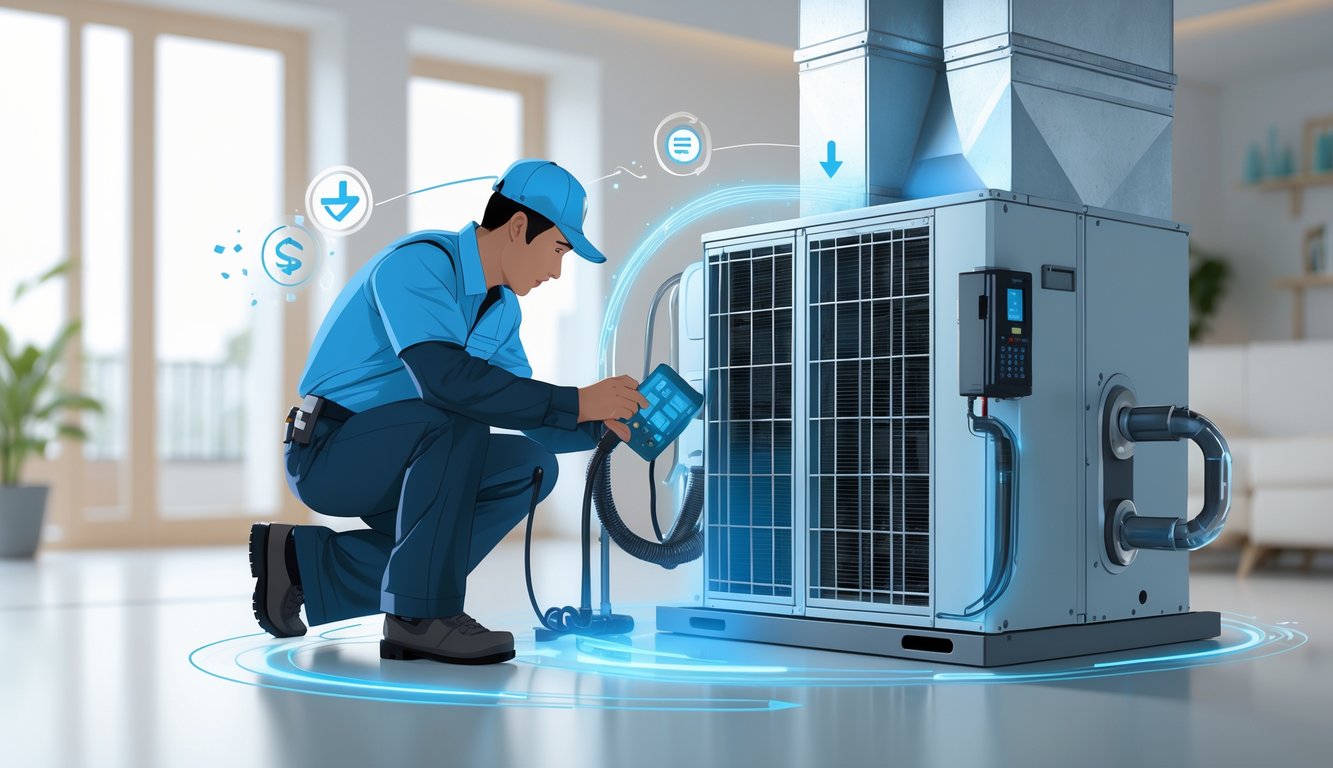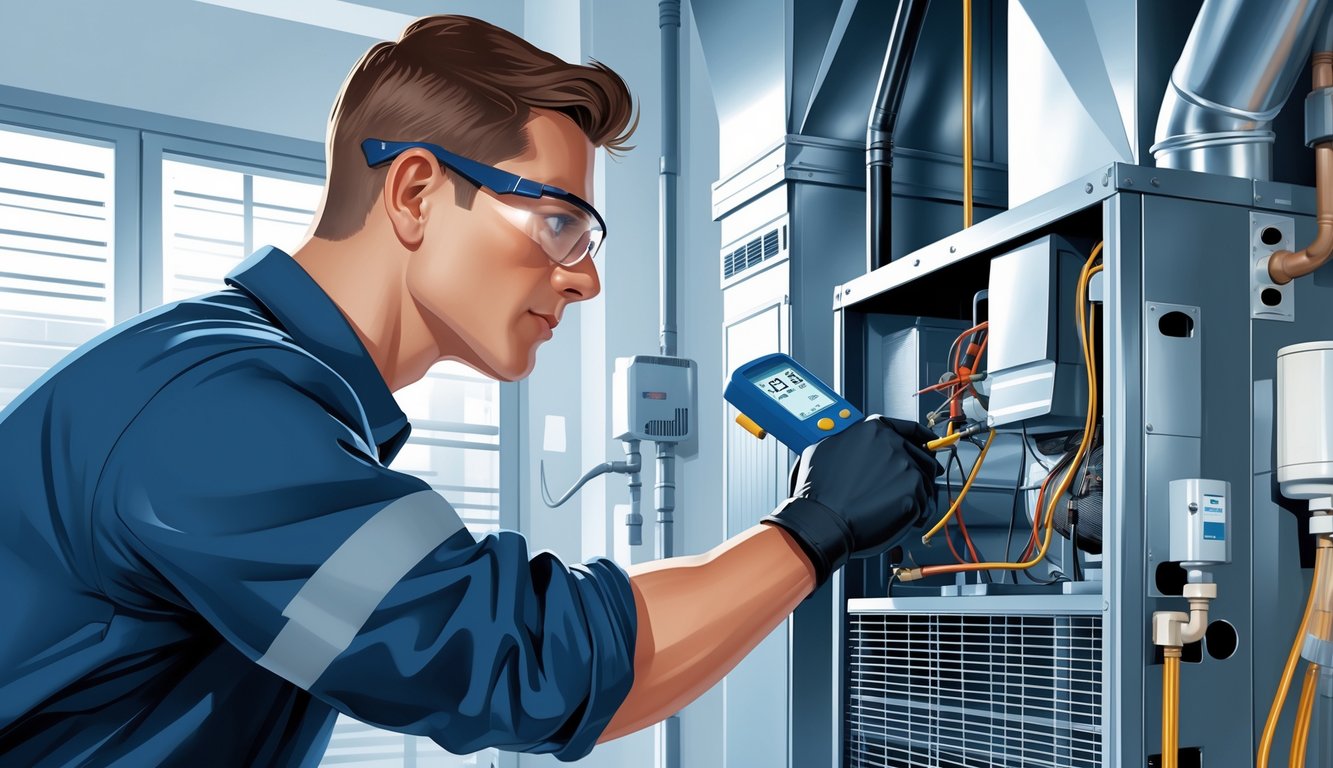
Improving Energy Efficiency with Regular Inspections
Every time someone complains about their bill, I remember what happens when you ignore your HVAC for just one season—dusty filters, duct tape on leaks, vents blocked by Christmas decorations. Most people don’t get how those “little things” add up, especially since an ENERGY STAR-rated tech can spot in five minutes what you’d miss in five years. Perfect systems don’t exist. It’s the hidden stuff that kills your energy numbers.
Spotting Energy Waste Early
You ever open up an HVAC closet and see a filter with a date written in Sharpie from last year? That’s not even the worst of it. The real problems are the ones you can’t see: busted thermostats, crumbling seals, heat just leaking away. The Department of Energy says heating and cooling eat up about 48% of home energy, and if you skip inspections, that number just gets worse.
I’ve met families shocked by “random” bill spikes. It’s always something like dirty filters or ignored parts making the system work overtime for months before anyone notices. Never dramatic—just a fan that sounds a little louder, rooms that cool a little slower, and nobody calls a tech until the bill jumps $50. I had a client tape blankets over his windows, convinced it was drafts. Nope—his HVAC was basically running a marathon in steel-toed boots. And don’t even get me started on DIY “fixes.” The only real shortcut? Get a pro to look at it.
Ensuring Optimal Airflow and Sealing Air Leaks
Crawlspaces, attic corners, duct joints—if I got a nickel for every cold air leak “fixed” with packing tape, I’d have a lot of nickels. Airflow is everything. Block one vent, ignore a loose duct, and your system pushes harder, burns more energy, and runs longer. It’s not just one cold room—bad airflow means the whole thing is fighting itself. The EPA says homes lose up to 30% of HVAC energy through duct leaks.
Last month, during an “energy audit,” I found half the ductwork dumping cold air inside the walls. The family thought their AC was broken. Actual fix? Seal the leaks and realign airflow with real (not dollar store) sealant. Forgetting to check for blocked vents or ignoring that weird whistling sound—expensive, quick-to-fix problems. The worst: furniture over returns, pet hair mats, and the classic “just close the vent if the room’s too cold.” That “works” if you want your system to work twice as hard for half the comfort.
Key HVAC Components Checked During Inspections

Air filters packed with dust, refrigerant leaking quietly—these are the disasters hiding in your system. I used to ignore them, thinking a new filter or refrigerant top-off was just for clean freaks. Every decent tech will show you the gross stuff hiding behind the vent cover, and your bill will show you the consequences. Everything looks fine until it suddenly isn’t.
Air Filters and Refrigerant Levels
When’s the last time you fixed something because a “small” problem went nuclear? Air filters are about as glamorous as cleaning the lint trap, but you should see what they catch. Restrict airflow early, and your system runs twice as long just to move stale air. The EPA says clogged filters can hike energy use by 15% or more. My tech showed me a table of pressure drops; I just saw my paycheck disappearing. Ignore the “replace every 3 months” sticker. Got pets? Allergies? It’s probably monthly, maybe even sooner.
And refrigerant—nobody talks about how a tiny leak can wreck efficiency, but being off by a single degree makes the compressor work way harder. A good inspector with a digital manifold will spot a low charge you’d never notice, saving you months of “why’s this room muggy?” I’ve seen neighbors blame their windows for a year, while their HVAC’s SEER rating was basically a joke. Techs start with filter calibration, chemical sniffers, and real loss rates—not just “looks fine” like my uncle insists is enough. Here’s what pros really check—it’s way more than a quick glance.
Air Conditioners and Heaters
Air conditioners and heaters—honestly, I still can’t believe how most of us (me, definitely) just pretend these things are magic rectangles until the room’s either a sauna or an icebox. You know what’s wild? I ignored the outside condenser for years, just let the leaves and fuzz cake up, and then got mad when my “energy-efficient” AC ran like a rusted lawnmower. One tech rolled up with a thermal camera—showed me the coil temps before and after a ten-second hose-down. Embarrassing. And those condensate lines? Nobody even thinks about them until you catch a whiff of mildew and suddenly you’re Googling “is black mold in AC dangerous” at 2 a.m.
Heat exchangers, don’t get me started. Apparently, those can crack and just kind of… exist, letting a bit of carbon monoxide sneak out, and you won’t notice until you’re dizzy or the inspector points out a weird stain. My last “thorough” inspection? Guy spent half an hour poking at relay switches and measuring flue gases. I didn’t even know what half those parts did, but I sure noticed the bill. If you’re genuinely curious, there’s a depressingly detailed checklist of what these folks look for. But in my experience, it’s always the dumb, ignored stuff—like a loose wire or a clogged drain—that ends up wrecking your budget. Apps and “smart” thermostats never warn you about that.